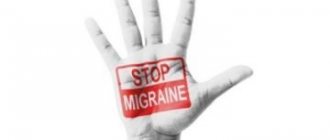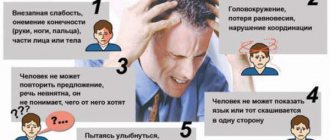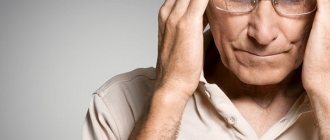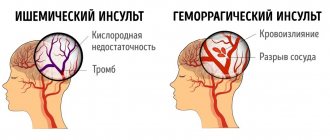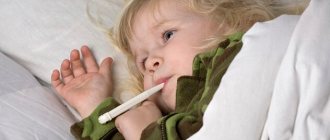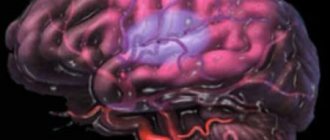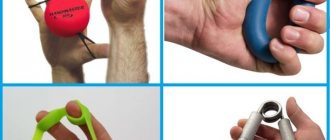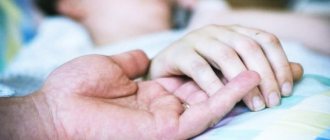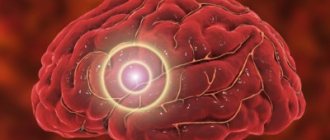Strokes are severe lesions of brain tissue caused by acute disorders of cerebral circulation. Against the background of prolonged spasm of the great vessels or their blockage, the ischemic form develops, and with rupture of the vascular wall and subsequent hemorrhage, the hemorrhagic form develops. In the first case, the symptoms may increase gradually, but in the second they always appear abruptly. At the same time, cerebrovascular insufficiency gives quite serious complications, one of them is paralysis and impaired fine motor skills after a stroke.
The recovery of such patients takes a very long time, but rehabilitation measures are needed as early as possible. And they need to be done under the supervision of experienced doctors. The specialists of the Verimed clinic will help the patient return to a full life.
What are fine motor skills?
Fine motor skills are clear, purposeful movements of the hands and fingers, controlled by the central nervous system. They are possible only with impeccably coordinated work of the brain, organs of vision and impulse-conducting nerves. There is an inextricable connection between motor activity and cognitive functions. Therefore, to fully restore fine motor skills after a stroke, not only the development of muscles and joints is required, but also exercises aimed at activating mental processes.
Features of training rehabilitation
When a person has a stroke, cerebral circulation is disrupted, leading to serious impairment of motor ability.
Common consequences include joint contracture, muscle atrophy and spasticity, paresis and paralysis.
The brain loses the ability to coordinate and control joints and muscles. Only special events can gradually restore lost functions.
The rehabilitation scheme is strictly individual, complex, the most important element of which is exercise therapy.
Special simulators provide mechanotherapy. Essentially, these are devices, instruments and appliances that provide targeted physical activity to the joints and muscle tissues affected by a stroke. They solve the following problems:
- Normalization of muscle tone. Post-stroke muscle hypertonicity impairs the activity and coordination of joint movement. Exercise machines allow you to restore normal muscle tone, achieve the desired sequence of movement, restore biological feedback and neuromuscular control, and eliminate pain during movement.
- Improving blood circulation and trophism. Controlled physical activity normalizes the supply of oxygen to brain tissue, normalizes tissue metabolism, which has a positive effect on the innervation of motor centers.
- Overcoming the psychological factor. After prolonged immobility, a person develops a psychological barrier, the fear of loss of mobility. He simply loses confidence in his abilities. Exercise machines allow the victim to again learn to control his muscles, walk, load his limbs, and hold objects in his hands.
Important! The advantage of simulators is the possibility of targeted loading of muscles and changing the point of application of the load, regulating the load and amplitude of movement. During the rehabilitation period, they help to gradually restore the relationship of the brain with the limbs and other muscular systems and restore physical fitness.
Symptoms of impaired hand motor skills after a stroke
Clinical signs of motor activity disorders are:
- a sharp decrease in muscle strength (until complete disappearance);
- rapid muscle fatigue;
- severe impairment of joint mobility due to contractures;
- impaired coordination of movements;
- reduction or loss of local sensitivity.
Mobility and coordination may be further affected by pain and tissue swelling.
How to help your hands with the help of the “Bud” simulator
The “Bud” device is considered the most effective means for developing hand fingers. In 80% of cases after a stroke, patients lose mobility and flexibility of the joints, which this simulator will help restore. In order to prevent negative consequences, training on the simulator should begin as early as possible. The “Bud” device is most preferable if, after a stroke, the patient has a persistent limitation of mobility in the joint (it will not injure them). It allows you to mechanically develop your fingers, while stimulating the nerve endings and sending impulses to the brain.
In order for the simulator to be as effective as possible, it is important to use it correctly, so that the finger clamps are as close to the fingertips as possible. Thanks to this, you can achieve maximum amplitude of arm opening and the involvement of all joints. The duration of training on the simulator is determined by the attending physician; as a rule, you should train at least 2 times a day for 30 minutes. As a rule, the majority of patients exercising on such a simulator were able to achieve complete restoration of the performance of their upper limbs.
What interferes with the recovery of motor skills after a stroke?
Improving the motor activity of the hands and restoring fine motor skills after acute cerebrovascular accidents is a rather complex process. It can be accelerated by the use of effective treatments, or it can be slowed down. The reasons for the slowdown (and sometimes impossibility) of rehabilitation may be:
- incorrect diagnosis;
- late treatment;
- serious disturbances in the nutrition of local tissues (circulatory disorders);
- injuries or chronic pathologies of nearby areas;
- depressive and apathetic states of the patient;
- other mental disorders.
Exercise equipment for recovery in the post-stroke period
Cerebral hemorrhage is a serious pathology, after which the patient faces a recovery period. Regardless of the causes of a stroke, its results are disastrous - loss of speech, memory, visual functions, paresis and paralysis of the limbs or the entire body. To correct sensory functions, the patient will definitely need the help of a speech therapist, neurologist, ophthalmologist and other doctors, and to restore motor activity, rehabilitation simulators are required. Such devices are available in clinics that monitor and treat patients in the post-stroke period; if financially possible, they can be purchased in a store for home use.
How is motor skills restored?
Combating hand motor dysfunction after a stroke requires an integrated approach. It is important to start treatment as early as possible. Timely therapy gives a much greater chance of quickly achieving positive results.
Please note: It is important to remember that every day without training contributes to the formation of a stereotype of lack of movement in the central nervous system. The direct consequence is tissue trophic disorders; Muscle atrophy and bone decalcification develop.
The main methods for developing hand motor skills in the recovery period after a stroke are massage and gymnastic exercises. Hands and fingers contain a huge number of nerve endings. If there is not an adequate signal for movement from the central nervous system, it is important to direct it from the fingers to the brain. Local massage prescribed to patients helps restore the transmission of nerve impulses - the so-called. reflex arc. In addition, the physical effect on tissue helps to improve local blood flow (microcirculation) and, accordingly, improve tissue trophism. Thanks to professional massage, used in combination with other techniques, you can quickly restore the ability to make active, precise movements, as well as tactile sensitivity.
Another important point when restoring fine motor skills after a stroke is regular exercise. Such exercises serve to prevent further decline in motor activity, prevent the development of muscle and joint contractures and promote functional restoration. Regular classes under the guidance of doctors help patients after a stroke quickly adapt to living conditions. The possibility of complete self-care is one of the most important tasks of rehabilitation techniques.
All exercises must be performed with both hands synchronously. Usually the mobility of one of them is impaired, and symmetrical actions will significantly speed up recovery. The duration of gymnastics should be no more than 8-10 minutes per hour, so as not to develop significant fatigue. It is important to repeat the set of movements regularly in order to re-form the muscle reflex and motor stereotype.
Examples of exercises:
- Clench your fingers into a fist, increasing your efforts in the final phase of the movement. Slowly unclench them, trying to imagine the action of each muscle.
- Place your hands on a horizontal surface with your palms facing up. Spread your fingers a little. Raise your little fingers while trying to keep the other fingers still. Lock them in this position for 3-5 seconds and relax. Perform a similar exercise sequentially for all other fingers.
- Place your palms on the table in the same way as in the previous exercise. Alternately make circles (clockwise and counterclockwise) with raised fingers, starting with the little finger.
To develop fine motor skills when recovering from a stroke, it is useful to use available materials. An excellent effect can be achieved by such actions as sorting through cereals, modeling from plasticine, fastening buttons and tying knots in a rope.
Varieties
Simulators for post-stroke rehabilitation can be divided into several categories:
- Place of installation and operation. There are 2 varieties - for home use and for specialized rehabilitation institutions. In the first case, the devices are small in size and simple in design;
- Design features - specialized and adaptable simulators. The first group includes devices specially designed for patients with impaired motor function. Various devices and objects that have a different purpose can be used as adaptable simulators. Examples include balls, foot supports, regular sticks, wall bars, etc.;
- The direction of impact is local devices and general impact simulators. Among the local devices there are simulators for hands, feet, fingers, etc. When using devices of the second type, several muscle groups are loaded at once (exercise bikes, treadmill, etc.).
It is best to purchase rehabilitation exercise equipment ready-made, in specialized stores. They are accompanied by instructions that will help you organize the operation correctly.
Important! Simple exercise machines can be made with your own hands, which helps to rationally place them in the apartment.
Exercise bikes
An exercise bike is a device with sadness that simulates riding a bicycle.
This simulator puts stress on the lower limbs, which helps restore walking skills.
Training on an exercise bike is carried out in a sitting position, which ensures simultaneous loading of the muscles of the legs and back, helping to reduce restrictions on the mobility of the torso, restoring not only the legs, but partly the arms.
There are 2 types of exercise bikes - with forced and natural rotation of the pedals. The first option is typical for use in a medical hospital. The feet are fixed on pedals, which are forced to rotate at a given speed. The lower limbs are forced to repeat the movement of the pedals.
Reference! Exercise bikes have been used since the first days of rehabilitation after a stroke.
At home, to restore the motor abilities of the legs, you can use a simpler exercise bike, on which the person himself pedals. The load is changed by adjusting the resistance to rotation, and its frequency is set by the participant in the lesson. In most cases, positive results from using an exercise bike are observed after 5-7 weeks of regular training.
With a stroke, the upper extremities are often affected. Special and adaptable exercise machines help eliminate muscle atrophy, restore fibers and normalize innervation, and restore hand function. The following types of simulators for developing arms are distinguished:
- universal static devices for developing fingers, hands and forearms;
- complex simulators for simultaneous loading of arms and legs;
- devices with biological feedback and computer control;
- dynamic devices of pedal and lever type;
- robotic simulators.
Useful video on the topic:
For fingers
One of the most effective simulators of this type is the “Bud” device. It allows you to fix your fingers at different distances from the tips. The load when extending and bending the fingers can be adjusted.
Coordination of finger movements can be trained using the Busyboard set. It is a board on which you can perform simple operations with laces and balls.
Important! Rubik's cube, plasticine or clay, rubber balls and rings are great for restoring hand motor skills.
For the hand
Hand trainer “Machine”.
It consists of working and passive plates, a spring mechanism, rollers and clamps for fingers and hands.
The articulated connection of the elements provides various movements of the hand with adjustable load.
The device trains the extensor muscles of the palm and fingers. The elbow and shoulder joints are loaded at the same time.
Robot glove. This is an ultra-modern simulator that can load the hand in different modes. Control is provided using a computer.
Elastic or spring expanders. When developing a hand, expanders are needed to provide load not only on the fingers, but also during wrist movement.
For joints
To restore mobility of the upper limbs, it is important to provide loads on their various muscles and joints, incl. elbow, forearm. In this direction, the following simulators can be distinguished:
- Manual exercise bike , i.e. to rotate the pedals by hand. It is in many ways similar to the above device, but is located at a height convenient for the use of hands when operating the pedals.
- Block type trainer . Its principle is based on lifting the affected arm with the healthy arm using a cable passed through a roller. By lowering the healthy arm, the motionless arm is raised, and vice versa. The spring mechanism maintains the specified load.
- Expanders with a load on the joints of the entire upper limb (most often of the stretching type).
Read also: Surgery after a stroke
In post-stroke rehabilitation, devices are widely used for local impact on the muscles and joints of the hands, and such exercises begin already at the first stage of the recovery period. However, most often they are combined with exercises for other muscle groups.
Important! The effectiveness of training increases with additional relaxing and therapeutic massage.
Muscle electrical stimulation
For paresis and paralysis of the limbs after a stroke, electrical stimulation of the nerve centers is effective.
It can be performed in case of ischemic type of pathology, 15-20 days after the main attack.
The procedure for lesions of the upper extremities is provided by two pairs of electrodes placed in the forearm area - in the area of the radial nerve, as well as the ulnar and median nerves.
The electrodes are supplied with a current with rectangular pulses lasting up to 1 ms at a frequency of 0.5 Hz. It is applied alternately - first to the radial nerve, and after 1-2 s - to the ulnar and median nerves. The current strength is 2.5-5 mA. The total duration of the procedure is 6-9 minutes.
If the lower extremities are affected, the electrodes are fixed in the area of the peroneal nerve and in the area of the lower leg (tibial nerve). The current parameters are selected similarly to the effects on the upper limbs.
Reference! To carry out electrical stimulation, special devices are used that generate current of the required parameters. The procedure is carried out every day for 11-14 days.
Proper loading of the lower limbs allows you to quickly get rid of restrictions on their mobility. The following typical leg exercisers can be distinguished:
- Devices that operate on the principle of an exercise bike. One of the effective options is the Manuped device. It is made in the form of a support platform on which a stand with a steering wheel and pedals is located. The feet on the pedals can be fixed motionless;
- Treadmill. When working out on this simulator, it is important not to get carried away with the speed of the treadmill. During rehabilitation, you should start at a speed of no more than 180-220 m/h. A mandatory element is safety handrails.
In mechanotherapy of injured lower extremities, devices are important to restore normal walking skills. The following simulators stand out in this direction:
- Inflatable pillow. It allows you to train balance, which is necessary when walking;
- Walkers. Their design should ensure a stable vertical position of the body;
- Stepper or slides. These simulators simulate walking on stairs or an inclined surface.
Reference! When using various systems for gait training, it is important to avoid eversion of the foot. For this purpose, special splints or foot supports are used.
Modern simulators are a complex system of devices capable of simulating various conditions. One of such systems is the Imitron complex. Various types of movement of the lower limbs are achieved by moving levers with the hands. Another simulator, “Equos,” restores the vestibular apparatus with an upright body position and walking.
Useful video on the topic:
For bedridden patients
In cases where a person is bedridden after a stroke, it is especially important to provide exercises to restore mobility.
In these conditions, specific simulators are needed that are suitable for use in a supine position.
They should provide a gentle effect on muscles and joints. They require their own drive (electric or hydraulic).
The simulators are designed for different impact areas. For the legs, you can use a training bike with forced rotation of the pedals. Joint devices provide flexion-extension movements with control of the position of the knees and hips.
Reference! The Shagonog 409 simulator turns out to be quite effective. It imitates walking in bedridden patients and is used for complete paralysis of the legs. Robotics is widely used for effective recovery.
Useful video on the topic:
The influence of psychological attitude in the development of hand motor skills
A stroke often becomes a real tragedy for both the patient and his family. Brain damage provokes a decrease in mental activity and emotional lability. The patient can, as it were, “give up” on himself; he develops indifference, periodically replaced by outbursts of irritability and even anger. Apathy can be so great that a person does not want to do any exercises, try to get up, or move in any way.
To the objective reasons for the decrease in psychological activity are added internal experiences caused by a change in the usual lifestyle, the inability to look after oneself, and make some kind of global decisions. Immobility, isolation, fear of becoming a burden, fear of the future turn an active and freedom-loving person just yesterday into a completely weak-willed and apathetic one. He loses faith in his own strength, the possibility of developing hand motor skills and returning to his former life. Against this background, depression may appear, which will only worsen the situation. Such a person definitely needs not only the moral support of family and friends, but also the help of a doctor.
The experience of psychologists and psychiatrists allows us to quickly and accurately determine the root of the existing problem and find the “key” to both the patient himself and his relatives. Specialists will select the correct treatment regimen that will help motivate the patient to perform the necessary exercises, eliminating the main manifestations of apathy, depression and other mental disorders. And with faith in a speedy recovery, the restoration of fine motor skills of the hands after a stroke will go much faster.
Don't let a decadent mood ruin your future life - just call us now!
When to start training
The doctor prescribes the necessary exercises and training on simulators depending on the patient’s condition and how much the stroke affected his physical and emotional health. It is not recommended to perform any actions without the knowledge of the doctor; this can significantly worsen your health.
If after a stroke the victim does not fall into a coma, then after a couple of days you can perform breathing exercises (under the supervision of a specialist) to prevent congestion in the lungs. After a week, the doctor may already prescribe light exercise in combination with physiotherapeutic treatment (for example, magnetotherapy and acupuncture) and massage.
During the rehabilitation period, all activities are aimed at restoring motor function, relieving muscle hypertonicity and strengthening them, and improving the psycho-emotional state. The most suitable solution is to use various simulators. With their help, you can significantly improve blood circulation and prevent muscle atrophy. The main advantage of such devices is that many models are suitable for paralyzed patients. The duration of rehabilitation measures is individual and determined by a specialist.
Arm trainers from Technogym
Previously, all aerobic training machines allowed only the muscles of the lower body to be loaded. Treadmills, exercise bikes, ellipsoids and steppers did not allow the muscles of the arm and shoulder girdle to be sufficiently worked out. That's why Technogym engineers have designed a new functional arm trainer!
In terms of its design features, this type of exercise machine is similar to an exercise bike for the muscles of the upper body. But it has high functionality and a large number of operating modes. The benefits of an arm trainer include:
- possibility of changing the working amplitude. The handles are rotated in small and large amplitudes, which allows you to adjust the load on the muscle group of the arms and shoulder girdle;
- change the height of the handles. You can perform a variety of exercises on the cardio exercise machine for the arms both in a sitting and standing position. This allows you to influence the muscles from different angles, which increases the efficiency of the load and promotes the harmonious development of the torso muscles;
- suitable for people with disabilities. Athletes with limited mobility can exercise by replacing the bench with a wheelchair;
- automatic adjustment of handles. Changing the position of the handles in different planes allows you to change the load on the arm muscles for a more effective training process;
- maintaining correct posture. The design of the simulator allows not only to strengthen the muscles of the arms and shoulders, but also to have a beneficial effect on the spine.
Arm trainers from Technogym are unique! They provide exercises with different amplitudes of rotation, therefore strengthening the muscles of the entire torso. This training process restores the athlete’s muscle corset after injury and increases the body’s endurance. The exercise machine takes care of the respiratory and cardiovascular systems and ensures the most effective fat burning.
This product has no analogues in terms of energy costs, since aerobic training on it is not inferior in its effectiveness even to a racing bicycle. Among the wide range of programs provided in this sports equipment, it is worth highlighting the Warm Up mode, which is designed to prepare professional athletes for various competitions.
Cardio exercise equipment for the arms from Technogym - perfect design and innovative mechanics. Every detail of the simulator allows you to ensure high-quality training and create convenient and comfortable conditions for training. The simulators are supplied in two configuration options:
- LED console. A budget model that allows for complete control over the progress of the training and heart rate indicators;
- UNITY console. An innovative console with many useful features and unique capabilities.
Arm trainers from the Technogym brand allow you to look at cardio training from a different angle. High-quality load on the torso muscles, safe impact on the joints and ligaments. An additional advantage of this product is that it can be used by older people and athletes with various injuries.
Modern approach to post-stroke rehabilitation
Medicine involves an interdisciplinary approach. It involves the participation of several specialists in the rehabilitation process:
- Rehabilitologist.
- Physiotherapist.
- Massage therapist.
- Neuropathologist.
- Speech therapist.
- Occupational therapist.
A rehabilitologist and a physiotherapist are primarily concerned with restoring movement in a paralyzed limb. For this purpose, special sets of exercises are used that the patient must perform every day. In the first stages they help him, in the future he must perform them at home on his own. Doctors will monitor progress and, if necessary, make changes to the program if the need arises.
It is important! In addition to direct rehabilitation, the patient should be helped to accept new living conditions, re-teach him how to care for himself and perform everyday tasks
Exercise machine "Manuped"
Manuped is a device necessary to activate motor function. Its distinctive feature is that it is universal, allowing you to develop both upper and lower limbs. The equipment is fully adaptable to the patient and makes it possible to regulate the load being performed. Its design represents improved ideas of mechanotherapy.
The manuped is the main support, at the top of which there is a steering wheel with two handles, and at the bottom there are pedals that secure the feet with special straps. The number of pedal revolutions is measured using a special counter. The applied load is adjusted using a screw that resists movement. This simulator is great for stroke patients; it has a number of advantages:
- has a sliding steering wheel. This allows the simulator to be used by a patient of any height, since he will be able to set the appropriate height;
- characterized by a unique design that organizes synchronous rotation of the limbs;
- Suitable for training patients with muscle atrophy and wasting, as well as partial paralysis.
Exercise bikes
Many experts advise training on exercise bikes. The patient is given a gradual, measured load on the pedals so that he can develop motor skills and movements of the lower extremities. Such simple exercises will help the patient learn to walk again independently, without the use of outside help. Most of the reviews from people who exercise on exercise bikes are positive; patients note a significant improvement in motor functions after only 4-6 weeks of training (depending on the severity of the case).
A distinctive feature of this device is that the load on the limbs and back is given in the patient’s sitting position, and a significant part of the attention is paid to the joints. Exercise bikes have a number of useful effects: they normalize blood circulation, reduce stiffness of the torso and limbs.
